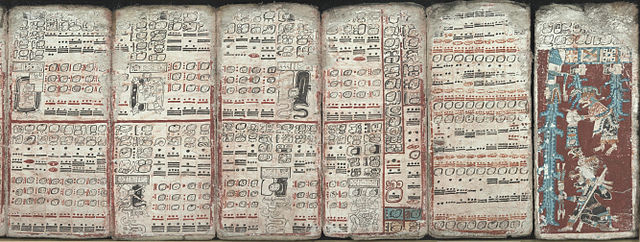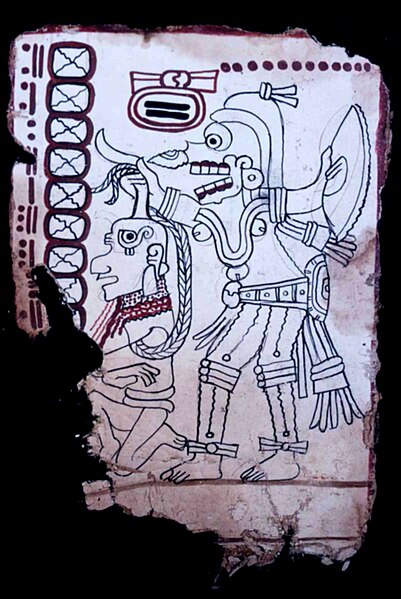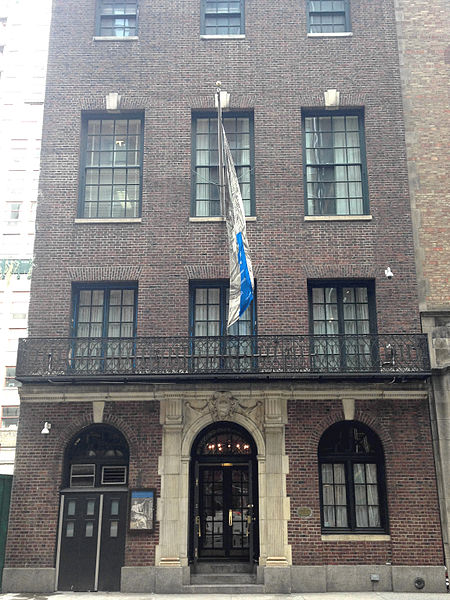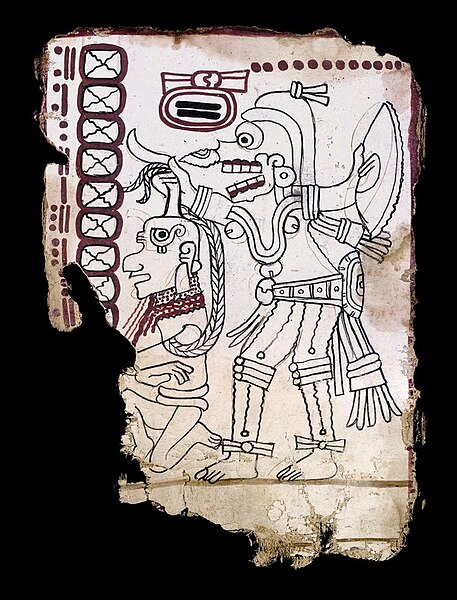The Dresden Codex is a Maya book, which was believed to be the oldest surviving book written in the Americas, dating to the 11th or 12th century. However, in September 2018 it was proven that the Maya Codex of Mexico, previously known as the Grolier Codex, is, in fact, older by about a century. The codex was rediscovered in the city of Dresden, Germany, hence the book's present name. It is located in the museum of the Saxon State Library. The codex contains information relating to astronomical and astrological tables, religious references, seasons of the earth, and illness and medicine. It also includes information about conjunctions of planets and moons.
Six pages of the Dresden codex: Pages (55–59, 74) on eclipses (left), multiplication tables, and a flood (far right)
Exhibition of the codex, with the backsides visible through mirrors, Saxon State Library, Dresden
First publication in 1810 by Humboldt, who repainted five pages for his atlas
The complete Dresden Codex in the correct reading sequence (pages 1–24, 46–74, 25–45) from left to right, including empty pages
The Maya Codex of Mexico (MCM) is a Maya screenfold codex manuscript of a pre-Columbian type. Long known as the Grolier Codex or Sáenz Codex, in 2018 it was officially renamed the Códice Maya de México (CMM) by the National Institute of Anthropology and History of Mexico. It is one of only four known extant Maya codices, and the only one that still resides in the Americas.
Page 6 of the Maya Codex of Mexico, depicting a death god with captive
The Codex was first displayed at the Grolier Club in New York, hence its name
Image: Grolier Codex, page 1
Image: Grolier Codex in Huff Po 1








